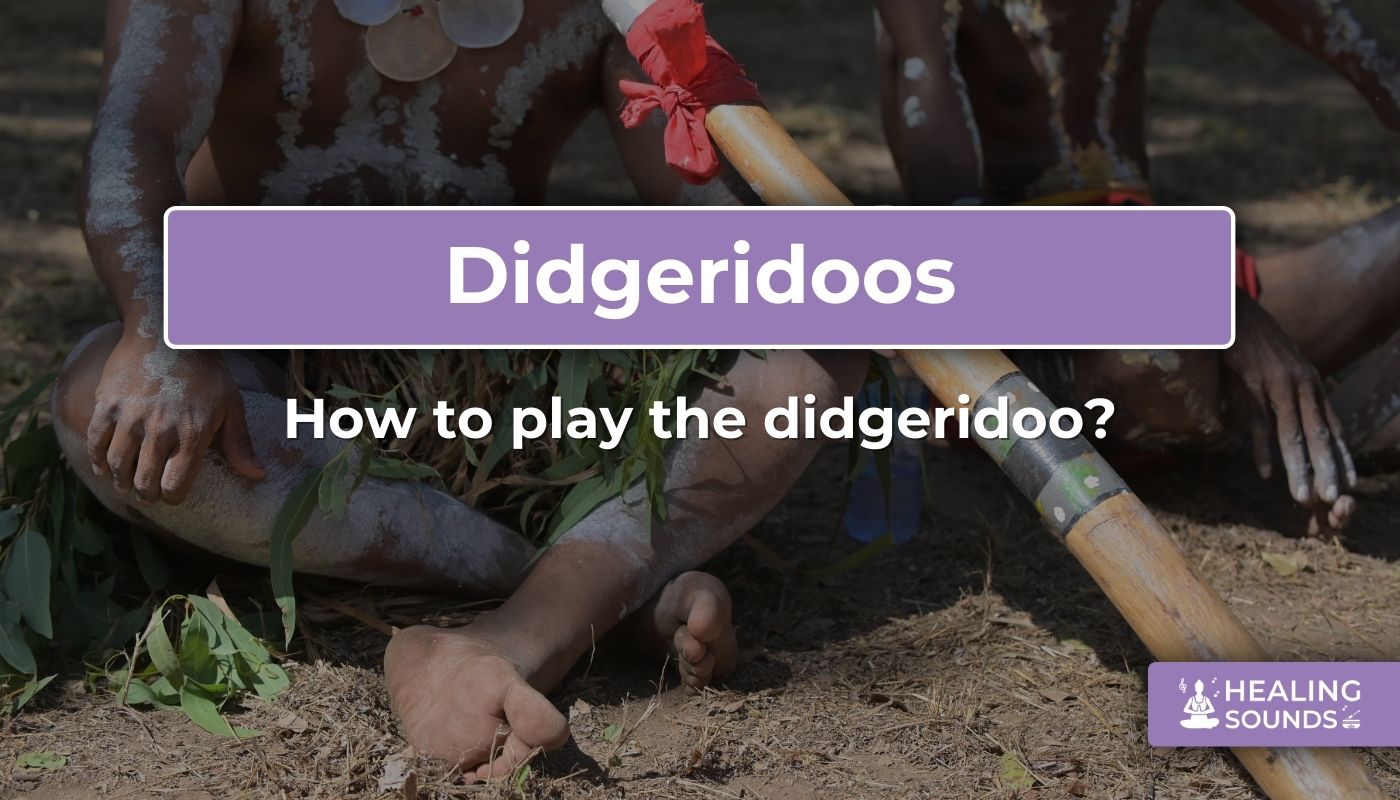Apprendre à jouer du didgeridoo est une expérience profondément enrichissante, qui vous connecte à des traditions ancestrales, des paysages sonores uniques et de puissantes techniques de respiration. Musicien en herbe, attiré par les instruments uniques et traditionnels, vous avez choisi une voie riche en profondeur culturelle et en exploration sonore. Ce guide propose des conseils complets pour jouer du didgeridoo , de la production de votre premier bourdon résonnant à la maîtrise de la fascinante technique de respiration circulaire utilisée par les joueurs de didgeridoo . Plongeons dans l'univers de cet instrument australien captivant.
Qu'est-ce qu'un didgeridoo ? Comprendre ses origines
Avant d'émettre votre premier son, comprendre les origines du didgeridoo enrichit l'expérience. Originaire des peuples aborigènes du nord de l'Australie, il y a probablement plus de 1 500 ans, le didgeridoo est traditionnellement fabriqué à partir de bois dur, notamment de branches d'eucalyptus creusées naturellement par les termites. Chaque instrument possède une voix unique façonnée par la nature.
Apprécier cette histoire favorise le respect de ses racines culturelles aborigènes . Le didgeridoo n'est pas seulement un instrument ; c'est un objet culturel, jouant souvent un rôle important dans les cérémonies et les récits. L'aborder avec conscience enrichit votre lien avec la musique.
Pourquoi le contexte culturel est important (jeu respectueux)
Il est important de tenir compte du contexte culturel. Traditionnellement, dans certaines cultures aborigènes d'Australie, la pratique du didgeridoo était principalement réservée aux hommes, et les femmes en étaient empêchées, parfois pour des raisons cérémonielles propres à ces groupes. Bien que ces restrictions traditionnelles ne soient pas universellement appliquées aujourd'hui, surtout en dehors des contextes cérémoniels, il est primordial de jouer du didgeridoo en conscience et en respectant ses origines.
Interagissez avec l'instrument en pleine conscience, en reconnaissant sa profonde signification culturelle. Ce respect constitue le fondement d'une relation enrichissante avec le didgeridoo et ses sonorités.
Choisir le bon didgeridoo pour les débutants
Choisir son premier didgeridoo est une étape passionnante. Pour les débutants qui apprennent à jouer du didgeridoo , tenez compte des facteurs suivants :
- Longueur : Les didgeridoos longs produisent généralement des notes plus graves (touches plus basses), tandis que les plus courts produisent des notes plus aiguës. Une longueur moyenne est souvent recommandée pour les débutants.
- Matériau : L'eucalyptus traditionnel offre une résonance authentique. Des alternatives modernes comme le teck, le bambou ou même le PVC résistant existent, offrant des qualités sonores et des prix variés.
- Embout buccal : Un embout buccal confortable, souvent en cire d'abeille, est essentiel. Il doit assurer une bonne étanchéité autour des lèvres, sans être trop grand ni trop petit.
- Tonalité : Les didgeridoos existent en plusieurs tonalités (Do, Ré, Mi). Une tonalité de Ré ou Mi est souvent recommandée aux débutants, car elle nécessite un contrôle de l'air légèrement inférieur à celui des tonalités plus graves.
Réfléchissez au son du didgeridoo qui vous attire. Recherchez-vous des sonorités profondes et méditatives ou des sons plus vifs et rythmés ? Healing Sounds propose différentes options pour répondre à vos besoins.

Didgeridoo Instrument en bois de teck australien
149,90 € 209,90 €
Ce didgeridoo en bois de teck est un excellent point de départ, offrant durabilité et propriétés acoustiques claires, vous aidant à apprendre le son de base du drone.
Explorez ce didgeridooComment obtenir votre premier son avec un didgeridoo
Produire le bourdon de base est la première étape. Cela peut paraître inhabituel au début, mais avec la pratique, cela devient intuitif. Cela répond directement à la question fréquente : « Comment obtenir un son d'un didgeridoo ? »
Préparez votre corps et votre respiration
Une préparation correcte facilite l’apprentissage :
- Posture : Asseyez-vous confortablement, le dos droit, les épaules détendues. Cela permet une circulation optimale de l'air au niveau du diaphragme.
- Détente des lèvres : Le son provient de la vibration des lèvres. Gardez-les détendues et détendues, sans les serrer ni les pincer.
- Aide à la respiration : utilisez votre diaphragme pour un flux d'air régulier. Pratiquez des exercices de respiration profonde et contrôlée.
Faire le bruit du drone
Suivez ces étapes pour créer le son fondamental du didgeridoo - le bourdon :
- Placez l'embout buccal confortablement contre vos lèvres, en créant une étanchéité douce. N'appuyez pas trop fort.
- Détendez vos lèvres et soufflez de l'air à travers elles, en visant une vibration bourdonnante et lâche, semblable au souffle d'une « framboise » ou à l'imitation du reniflement d'un cheval.
- Ajustez le flux d’air et le relâchement des lèvres jusqu’à ce que vous entendiez un bourdonnement continu et résonnant – le drone !
- Concentrez-vous sur le maintien d’un flux d’air constant depuis votre diaphragme pour un drone cohérent.
Ne vous découragez pas si cela prend du temps. Expérimentez de légers ajustements de la tension des lèvres et de la pression de l'air. C'est souvent le premier obstacle pour les débutants qui se demandent si un didgeridoo est difficile à jouer ; le bourdon de base est réalisable avec de la patience !
Améliorer vos techniques de jeu de didgeridoo
Une fois que vous pouvez tenir un drone stable, vous pouvez explorer des techniques pour ajouter de la texture et du rythme à votre jeu.
Ajout de variations au drone
Découvrez ces techniques de jeu de didgeridoo :
- Mouvements de la langue : utilisez votre langue pour articuler des sons comme « da-da », « ta-ta » ou « la-la » tout en bourdonnant pour créer des motifs rythmiques.
- Constrictions des joues et de la gorge : resserrer et détendre légèrement vos joues ou votre gorge peut modifier le timbre et le volume du drone.
- Vocalisations : Essayez de fredonner, de grogner ou même de crier des sons simples dans le didgeridoo tout en bourdonnant. Cela superpose votre voix au bourdon pour des effets complexes.
- Harmoniques (Toots) : En serrant considérablement vos lèvres et en augmentant la pression de l'air, vous pouvez produire des notes harmoniques plus aiguës appelées harmoniques ou « toots ».
Maîtriser la respiration circulaire (la clé du son continu)
La respiration circulaire est sans doute la technique avancée de didgeridoo la plus connue. Elle permet aux musiciens de maintenir un bourdonnement continu sans interruption respiratoire. Elle répond à la question : « Comment respire-t-on en jouant du didgeridoo ? »
Le principe de base est de stocker une petite quantité d'air dans vos joues gonflées, de pousser cet air dans l'instrument en utilisant les muscles de vos joues pour maintenir le drone, tout en prenant simultanément une inspiration rapide par le nez.
- Remplissez votre bouche d’eau (ou gonflez simplement vos joues).
- En gardant vos lèvres scellées, faites sortir l'eau (ou l'air) en un mince filet en utilisant uniquement les muscles de vos joues.
- Tout en serrant, entraînez-vous à inspirer rapidement par le nez.
- Une fois à l'aise, essayez d'appliquer ceci tout en maintenant le buzz des lèvres, en passant éventuellement au didgeridoo.
Maîtriser la technique du didgeridoo à respiration circulaire exige une pratique soutenue, mais permet de jouer sans interruption. Elle est également associée à des bienfaits potentiels pour la santé, comme le renforcement des muscles respiratoires. Des recherches, comme une étude publiée dans le British Medical Journal (BMJ) , ont même exploré ses effets positifs sur des pathologies comme l'apnée du sommeil.
Conseils pour progresser au didgeridoo
Comme pour tout instrument, une pratique régulière est essentielle.
- Pratiquez régulièrement : même des séances quotidiennes courtes et ciblées sont meilleures que des séances longues et peu fréquentes.
- Enregistrez-vous : l'écoute permet d'identifier les domaines nécessitant des améliorations dans la stabilité, le rythme ou le timing technique de votre drone.
- Écoutez largement : explorez les enregistrements de différents joueurs de didgeridoo pour vous inspirer des sons et des rythmes.
- Rechercher une communauté : connectez-vous avec d'autres joueurs en ligne ou localement pour obtenir des conseils et des encouragements.
Alors, est-ce difficile de jouer du didgeridoo ? Avec de la pratique, il est facile pour la plupart de s'initier au bourdon de base. Maîtriser des techniques comme la respiration circulaire et les rythmes complexes demande de la persévérance, mais l'expérience en elle-même est enrichissante.
Prendre soin de votre instrument
Un entretien approprié garantit que votre didgeridoo dure et sonne au mieux :
- Évitez les températures/humidité extrêmes : le bois peut se fissurer s’il est exposé à des changements drastiques.
- Nettoyer occasionnellement : Essuyer délicatement l'intérieur si nécessaire, en veillant à ce qu'il soit complètement sec. Veiller à maintenir l'embout buccal propre.
- Entretien de la cire d'abeille : Si votre embouchure est en cire d'abeille, il faudra peut-être la remodeler ou la refaire avec le temps. Réchauffez-la doucement avec vos mains pour la modeler si nécessaire.
Découvrez des didgeridoos polyvalents pour votre voyage

179,90 €
249,90 €
Produit des sons profonds et résonnants, parfaits pour la méditation et l'exploration des sons apaisants du didgeridoo. En savoir plus ➔

179,90 €
249,90 €
Sa conception compacte facilite la pratique du didgeridoo, où que vous soyez et à tout moment. En savoir plus ➔

149,90 €
209,90 €
Sa forme spirale unique offre une portabilité optimale sans compromettre la profondeur du son, idéale pour la sonothérapie. En savoir plus ➔
Conclusion : Votre voyage au didgeridoo commence
Apprendre à jouer du didgeridoo, c'est bien plus qu'acquérir une nouvelle compétence musicale ; c'est une invitation à un monde de sons profonds, de respiration rythmique et de connexions culturelles. De la compréhension de ses origines au choix de l'instrument, en passant par la maîtrise du bourdon et l'exploration de techniques avancées comme la respiration circulaire , chaque étape constitue un voyage enrichissant.
Adoptez le processus, pratiquez régulièrement et laissez les vibrations uniques et bienfaisantes du didgeridoo guider votre exploration musicale. Explorez la sélection soignée de Healing Sounds pour trouver l'instrument idéal pour débuter ou poursuivre votre exploration.
Questions fréquemment posées sur le didgeridoo
Produire le son de base du bourdon est accessible à la plupart des débutants avec un peu de pratique et de patience. Maîtriser des techniques avancées de didgeridoo, comme la respiration circulaire et les rythmes complexes, demande plus de temps et d'implication, mais les premières étapes sont généralement considérées comme faciles à réaliser.
Traditionnellement, dans certaines cultures aborigènes du nord de l'Australie, la pratique du didgeridoo était principalement réservée aux hommes, notamment lors des cérémonies. Ces restrictions variaient selon les groupes culturels. Aujourd'hui, en dehors de ces contextes cérémoniels traditionnels, des personnes de toutes origines jouent du didgeridoo, mais il est essentiel de le faire dans le respect de ses origines aborigènes .
Pour obtenir le son principal du didgeridoo (le bourdon), détendez vos lèvres et soufflez de l'air à travers elles dans l'embouchure, comme pour un son de framboise. Il faut créer une légère étanchéité avec l'embouchure et maintenir un flux d'air régulier, soutenu par votre diaphragme. Ajustez le relâchement des lèvres et le flux d'air jusqu'à obtenir un bourdonnement résonant continu.
Pour jouer en continu, les joueurs de didgeridoo utilisent une technique appelée respiration circulaire . Celle-ci consiste à emmagasiner de l'air dans les joues gonflées et à utiliser les muscles des joues pour le propulser dans l'instrument afin de maintenir le son, tout en inspirant rapidement par le nez. Cette technique demande de la pratique pour la coordination, mais permet de jouer sans interruption.

